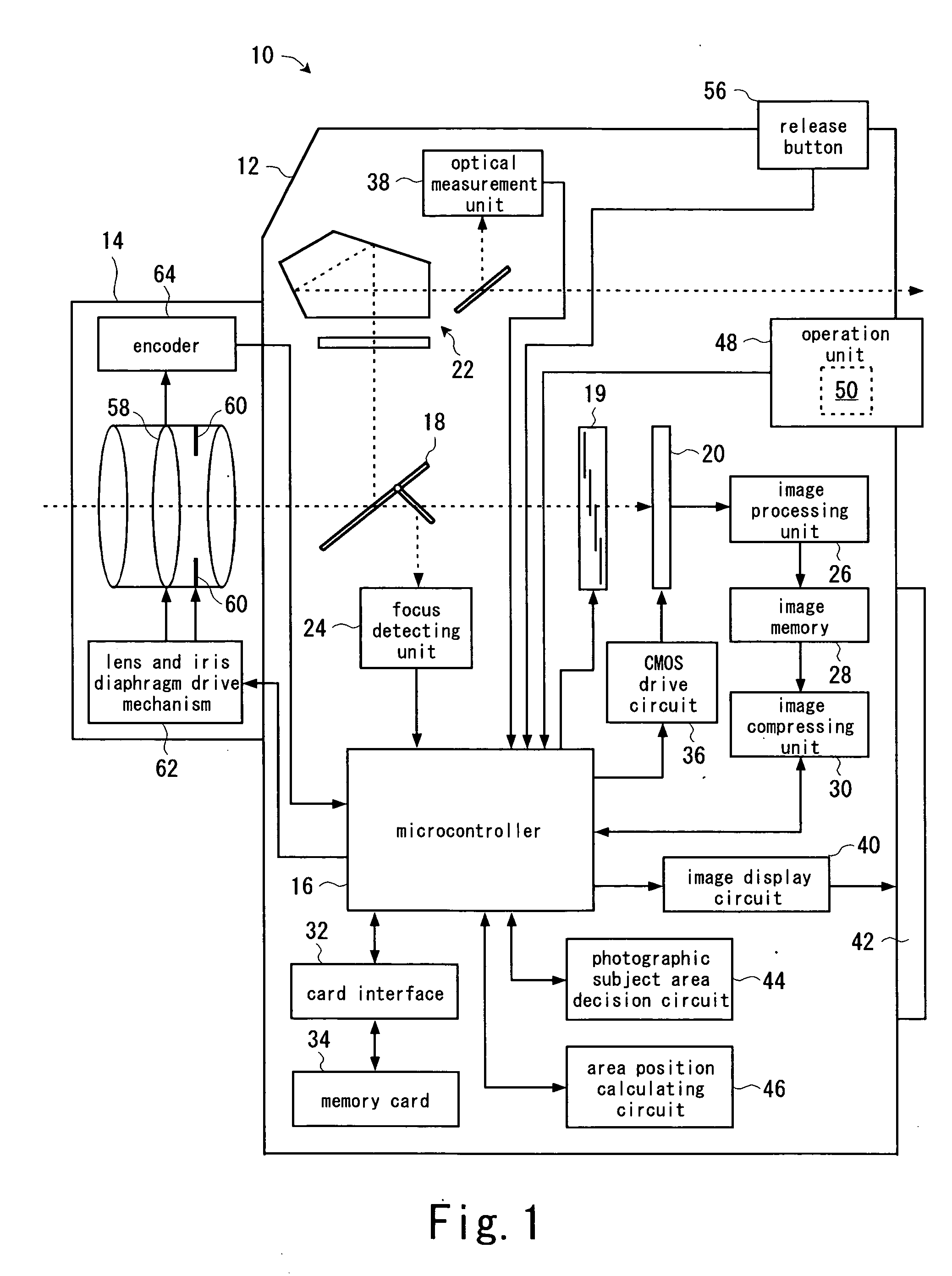Electronic still camera and method of image acquisition of electronic still camera
a still camera and electronic technology, applied in the field of electronic still cameras, can solve the problems of wasteful use of memory space of image storage media, inability to change the size of an area to be cut out (cropping area) for every photographing, and the data size of a photographic image is showing a tendency to increase. , to achieve the effect of avoiding wasteful use of memory spa
- Summary
- Abstract
- Description
- Claims
- Application Information
AI Technical Summary
Benefits of technology
Problems solved by technology
Method used
Image
Examples
first embodiment
[0032]FIG. 1 shows an electronic still camera of the present invention.
[0033] An electronic still camera 10 is a digital single lens reflex camera, and is constituted of a main unit 12 and a lens unit 14 which is attached to a front surface of a casing of the main unit 12.
[0034] The main unit 12 includes a microcontroller 16 for controlling the electronic still camera 10 as a whole. In the main unit 12, a quick return mirror 18, a mechanical shutter 19, and a light-receiving surface of an imaging device 20 (CMOS sensor) for capturing an image of a subject are disposed on an optical axis of the lens unit 14. In a reflecting direction of the mirror 18 (upper side in the drawing), a finder optical system 22 is disposed. In a reflecting direction of a submirror of the mirror 18 (lower side in the drawing), a focus detecting unit 24 for detecting a focusing state of the subject image is disposed. Focus detecting data which is outputted from the focus detecting unit 24 is supplied to the...
second embodiment
[0075]FIG. 6 and FIG. 7 show photographing operation of the electronic still camera 10a according to the
[0076] Similarly to the first embodiment (FIG. 2), steps S110 to S140 are performed according to operation by a photographer.
[0077] In a step S152, a microcontroller 16 sets a flag FC at “1” when it is determined that focus is achieved in a step S150. Thereafter, processing proceeds to a step S160.
[0078] In a step S154, the microcontroller 16 resets the flag FC to “0” when it is determined that the focus is not achieved in the step S150. Thereafter, processing proceeds to the step S160.
[0079] Then, similarly to the first embodiment (FIG. 2 and FIG. 3), steps S160 to S200 are performed according to operation by the photographer.
[0080] In a step S202, the microcontroller 16 determines whether the flag FC is “1” or not. When the flag FC is “1”, processing proceeds to a step S210. In the step S210, the same processing as that in the step S210 in the first embodiment is performed. ...
PUM
 Login to View More
Login to View More Abstract
Description
Claims
Application Information
 Login to View More
Login to View More - R&D
- Intellectual Property
- Life Sciences
- Materials
- Tech Scout
- Unparalleled Data Quality
- Higher Quality Content
- 60% Fewer Hallucinations
Browse by: Latest US Patents, China's latest patents, Technical Efficacy Thesaurus, Application Domain, Technology Topic, Popular Technical Reports.
© 2025 PatSnap. All rights reserved.Legal|Privacy policy|Modern Slavery Act Transparency Statement|Sitemap|About US| Contact US: help@patsnap.com



